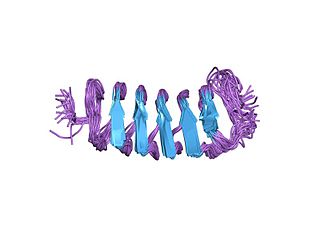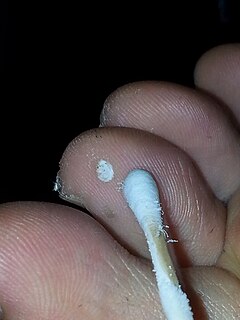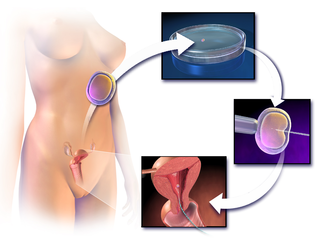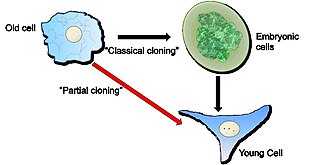 W
WAntifreeze proteins (AFPs) or ice structuring proteins (ISPs) refer to a class of polypeptides produced by certain animals, plants, fungi and bacteria that permit their survival in temperatures below the freezing point of water. AFPs bind to small ice crystals to inhibit the growth and recrystallization of ice that would otherwise be fatal. There is also increasing evidence that AFPs interact with mammalian cell membranes to protect them from cold damage. This work suggests the involvement of AFPs in cold acclimatization.
 W
WArtificial insemination (AI) is the deliberate introduction of sperm into a female's cervix or uterine cavity for the purpose of achieving a pregnancy through in vivo fertilization by means other than sexual intercourse. It is a fertility treatment for humans, and is common practice in animal breeding, including dairy cattle and pigs.
 W
WCloning is the process of producing individuals with identical or virtually identical DNA, either naturally or artificially. In nature, many organisms produce clones through asexual reproduction. Cloning in biotechnology refers to the process of creating clones of organisms or copies of cells or DNA fragments.
 W
WCryosurgery is the use of extreme cold in surgery to destroy abnormal or diseased tissue; thus, it is the surgical application of cryoablation. The term comes from the Greek words cryo (κρύο) and surgery meaning "hand work" or "handiwork". Cryosurgery has been historically used to treat a number of diseases and disorders, especially a variety of benign and malignant skin conditions.
 W
WEmbryo transfer refers to a step in the process of assisted reproduction in which embryos are placed into the uterus of a female with the intent to establish a pregnancy. This technique, may be used in humans or in animals, in which situations the goals may vary.
 W
WFreezing is a phase transition where a liquid turns into a solid when its temperature is lowered below its freezing point. In accordance with the internationally established definition, freezing means the solidification phase change of a liquid or the liquid content of a substance, usually due to cooling.
 W
WA frozen zoo is a storage facility in which genetic materials taken from animals are stored at very low temperatures (−196 °C) in tanks of liquid nitrogen. Material preserved in this way can be stored indefinitely and used for artificial insemination, in vitro fertilisation, embryo transfer, and cloning. Some facilities also collect and cryopreserve plant material.
 W
WHypothermia is defined as a body core temperature below 35.0 °C (95.0 °F) in humans. Symptoms depend on the temperature. In mild hypothermia, there is shivering and mental confusion. In moderate hypothermia, shivering stops and confusion increases. In severe hypothermia, there may be paradoxical undressing, in which a person removes their clothing, as well as an increased risk of the heart stopping.
 W
WIn vitro fertilisation (IVF) is a process of fertilisation where an egg is combined with sperm outside the body, in vitro. The process involves monitoring and stimulating a woman's ovulatory process, removing an ovum or ova from the woman's ovaries and letting sperm fertilise them in a liquid in a laboratory. After the fertilised egg (zygote) undergoes embryo culture for 2–6 days, it is implanted in the same or another woman's uterus, with the intention of establishing a successful pregnancy.
 W
WThe Institute for Problems of Cryobiology and Cryomedicine in Kharkiv is one of the institutes of the National Academy of Science of Ukraine, and is the largest institute devoted to cryobiology research in the world. Established in 1972, the focus of the research is on cryoinjury, cryosurgery, cryopreservation, lyophilization and hypothermia. The Institute publishes the peer-reviewed scientific journal Problems of Cryobiology and Cryomedicine.
 W
WIn the field of cell biology, the method of partial cloning (PCL) converts a fully differentiated old somatic cell into a partially reprogrammed young cell that retains all the specialised functions of the differentiated old cell but is simply younger. The method of PCL reverses characteristics associated with old cells. For example, old, senescent, cells rejuvenated by PCL are free of highly condensed senescence-associated heterochromatin foci (SAHF) and re-acquire the proliferation potential of young cells. The method of PCL thus rejuvenates old cells without de-differentiation and passage through an embryonic, pluripotent, stage.
 W
WKenneth B. Storey is a Canadian scientist whose work draws from a variety of fields including biochemistry and molecular biology. He is a Professor of Biology, Biochemistry and Chemistry at Carleton University in Ottawa, Canada. Storey has a world-wide reputation for his research on biochemical adaptation - the molecular mechanisms that allow animals to adapt to and endure severe environmental stresses such as deep cold, oxygen deprivation, and desiccation.
 W
WVitrification is the transformation of a substance into a glass, that is to say, a non-crystalline amorphous solid. In the production of ceramics, vitrification is responsible for its impermeability to water.